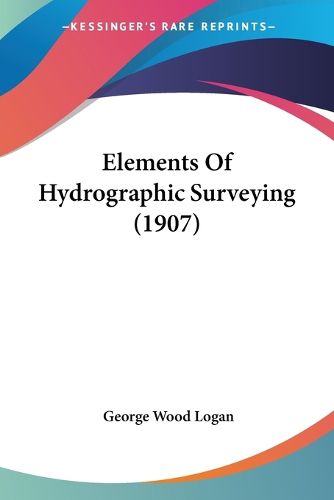Readings Newsletter
Become a Readings Member to make your shopping experience even easier.
Sign in or sign up for free!
You’re not far away from qualifying for FREE standard shipping within Australia
You’ve qualified for FREE standard shipping within Australia
The cart is loading…






Purchase of this book includes free trial access to www.million-books.com where you can read more than a million books for free. This is an OCR edition with typos. Excerpt from book: CHAPTER III. BASE LINE MEASUREMENT. f6. In a hydrographic survey, the base line is ordinarily the only distance directly measured, all other distances being derived from triangulation based upon that measurement. As a result, therefore, an inaccuracy in the measurement of the base is carried through all future work. The triangulation merely establishes the distance between any two points in relation to the length of the measured base, and a variation of n feet per 100 in that measure will produce an error of n per cent in every distance shown on the resulting chart. Thus, if a base line of 2000 feet contains an error of measurement of 10 feet, or .005 of its length, every distance on the chart will be in error about 30 feet for each nautical mile. 67. It will be apparent that accuracy of base measurement becomes more essential as the field of survey is extended. Taking the example just given, if the survey is one of a small harbor whose farthest station lies no more than one mile from the base, the error of 30 feet in its longest line would not affect the value of the chart for navigation work; but if the same base line were expanded by triangulation for 50 miles along a coast, the error of one-quarter mile in the farthest plotted position is much too great to be admissible. For like reasons, the base should be of the greatest practicable length, for then a given error of measurement results in a smaller percentage of the whole. The ideal method, if practicable, would be to make actual measure of the distance between the two most remote stations; in this case an existing error would appear in diminished form in the distance between any other two points, instead of being expanded, as is the case when the base is one of the shorter lines of the triangulation. 68. The…
$9.00 standard shipping within Australia
FREE standard shipping within Australia for orders over $100.00
Express & International shipping calculated at checkout
Purchase of this book includes free trial access to www.million-books.com where you can read more than a million books for free. This is an OCR edition with typos. Excerpt from book: CHAPTER III. BASE LINE MEASUREMENT. f6. In a hydrographic survey, the base line is ordinarily the only distance directly measured, all other distances being derived from triangulation based upon that measurement. As a result, therefore, an inaccuracy in the measurement of the base is carried through all future work. The triangulation merely establishes the distance between any two points in relation to the length of the measured base, and a variation of n feet per 100 in that measure will produce an error of n per cent in every distance shown on the resulting chart. Thus, if a base line of 2000 feet contains an error of measurement of 10 feet, or .005 of its length, every distance on the chart will be in error about 30 feet for each nautical mile. 67. It will be apparent that accuracy of base measurement becomes more essential as the field of survey is extended. Taking the example just given, if the survey is one of a small harbor whose farthest station lies no more than one mile from the base, the error of 30 feet in its longest line would not affect the value of the chart for navigation work; but if the same base line were expanded by triangulation for 50 miles along a coast, the error of one-quarter mile in the farthest plotted position is much too great to be admissible. For like reasons, the base should be of the greatest practicable length, for then a given error of measurement results in a smaller percentage of the whole. The ideal method, if practicable, would be to make actual measure of the distance between the two most remote stations; in this case an existing error would appear in diminished form in the distance between any other two points, instead of being expanded, as is the case when the base is one of the shorter lines of the triangulation. 68. The…